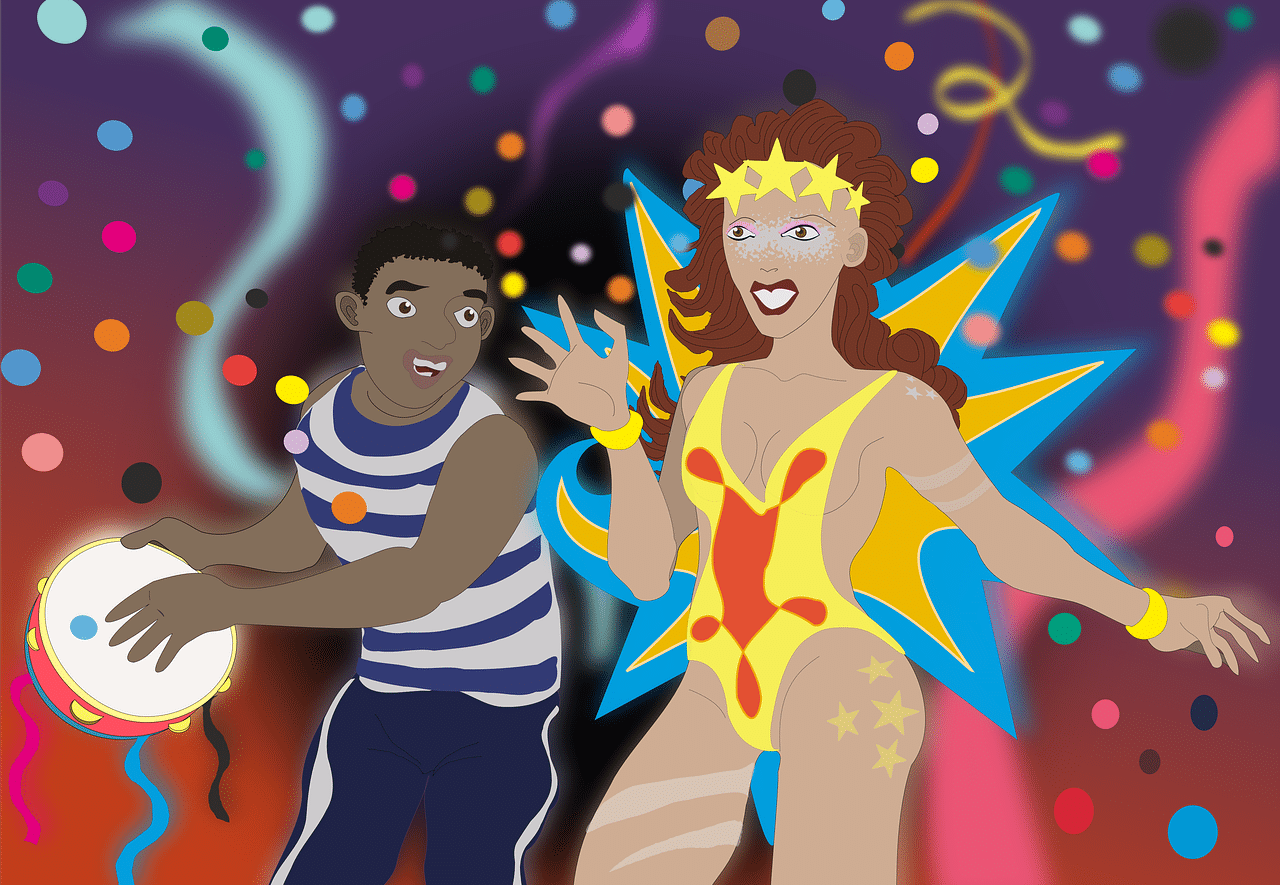
Samba is a dance and musical genre that was born in Brazil.
Samba is a dance and musical genre originating in Brazil , which has its roots in Africa . History indicates that it was developed in Rio de Janeiro in the mid- 19th century by slaves who gained their freedom.
It should be noted, however, that the concept of samba is applied to different types of rhythms and dances that the African-American population developed in different states of Brazil . Samba is usually characterized by the inclusion of percussion instruments and choirs that sing the songs.
Groups dedicated to dancing and singing samba are called samba school . During carnivals, samba schools parade through a space known as a sambadrome , being the protagonists of immense popular festivals.
dance samba
Samba is danced following the rhythm of the percussion with the legs and shaking the pelvis . Those who dance samba usually wear little clothing and various ornaments as part of their costumes.
Although not all of us can become outstanding samba dancers, since in addition to theory and practice it is always necessary to have a certain natural talent , there are various tips that we can follow so as not to sit back while others enjoy the rhythm.
The first fundamental point is to adopt the correct body position, according to the role we must assume. The leader , who is usually a man, must place his right hand above the back of the other person (the follower) to be able to take his left hand and hold it, more or less at eye level. The follower, for his part, must rest his right hand on the shoulder of the first, while the latter hugs him lightly, always maintaining a certain distance between the bodies.
Having achieved this position, the movement begins. It is very important to start with a sensitivity to music before delving into technical issues: if we do not feel the rhythm, if we do not allow the music to incite us to move, dance lessons will be of no use. Basically, we must take three steps for each pair of beats , the second being the shortest.

A samba school is a group of dancers of this genre.
The rebound
One of the secrets for the movement to reflect the essence of this music is the bounce : between one step and another there must be a fluid transition, which engages the entire body. To achieve this, it is possible to think that we are constantly stepping on different objects that appear in our path and that we quickly try to lift our foot so as not to break them. It is very important that this rebound is expressed with the whole body, and not just with the legs.
Although it is not directly related to movement, the direction of your gaze is also essential: it is recommended to always keep it forward , over the other person's shoulders. Concentration is essential for good execution, and that is why it is necessary not to allow the eyes to find distractions at every step.
As in any other discipline, to master samba we must start with the basic steps, and then gradually advance to more complex combinations. We must not allow anxiety to prevent us from internalizing each lesson , since without solid foundations great structures cannot be built. If we add enjoyment to all this, then we have guaranteed success.
Other uses of the term samba
It should be noted that the notion of samba is also used in other contexts. Samba , for example, is the name of software developed to allow computers (computers) that use systems such as Unix or GNU/Linux to function on a Windows network .
Samba is also the name of a car manufactured by Talbot in the 1980s , of a muscular phenomenon that occurs during apnea , and of a character in Hindu mythology .
Finally, there are towns called Samba in India (belonging to the state of Jammu and Kashmir ) and in Angola (province of Luanda ).
